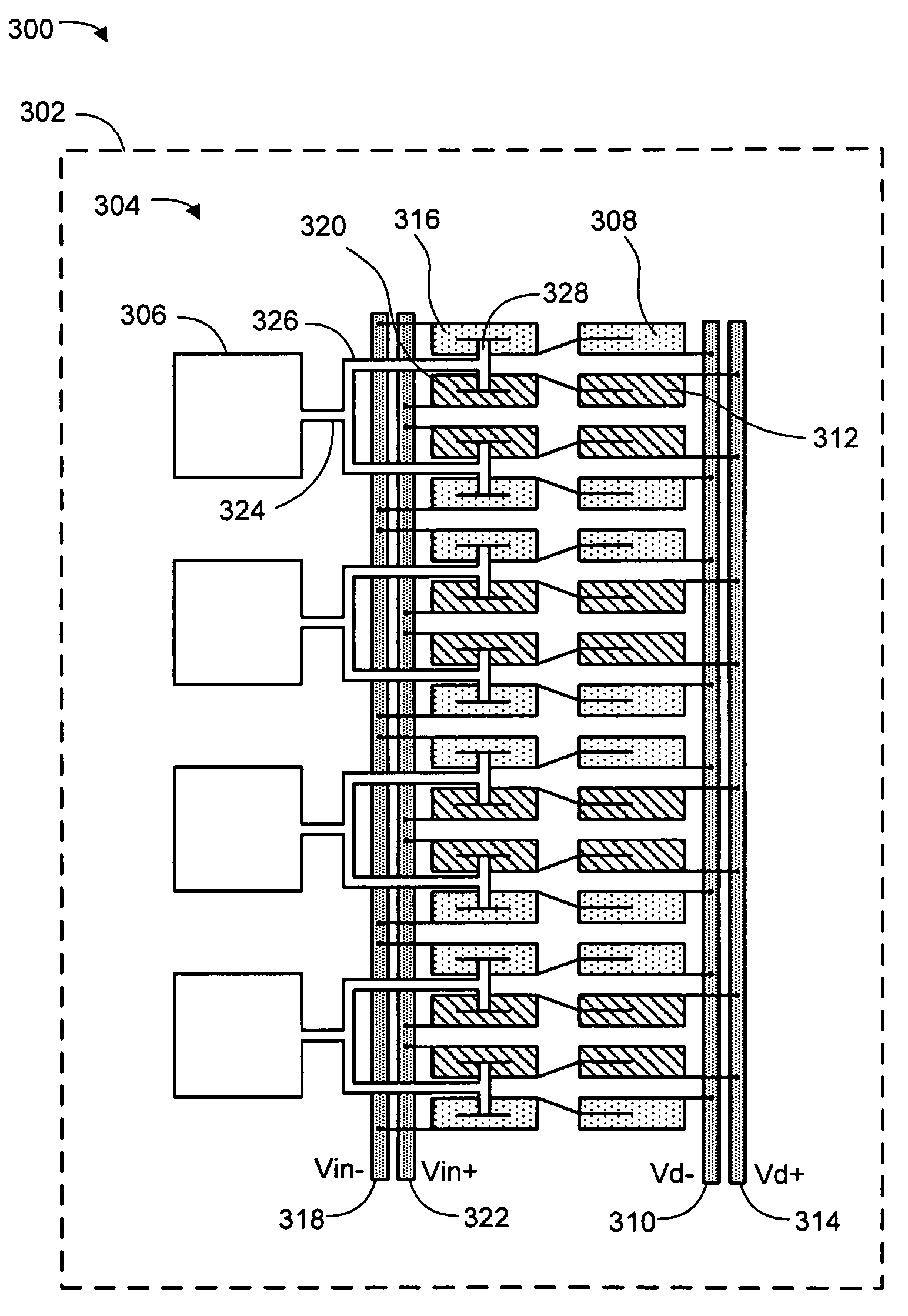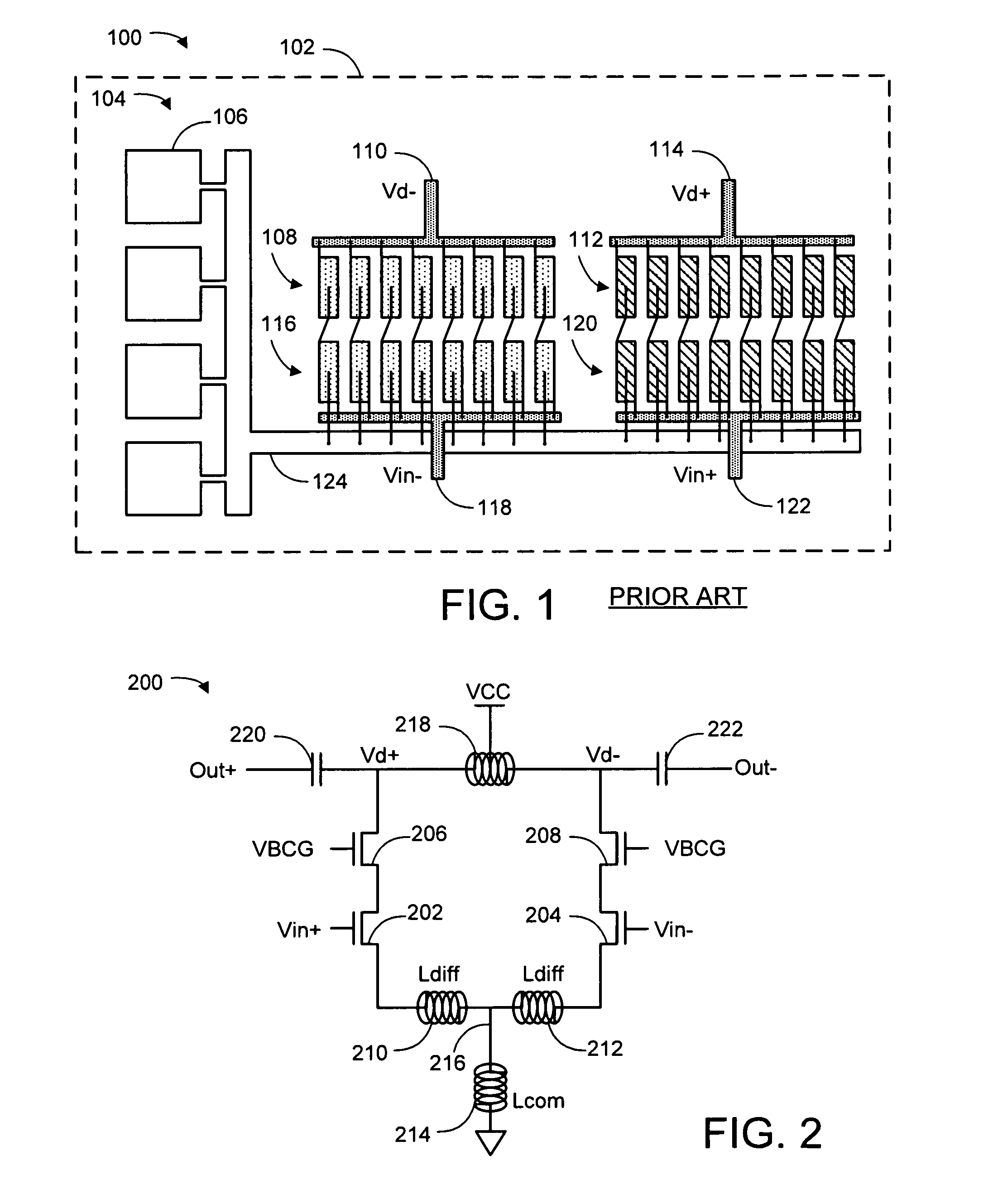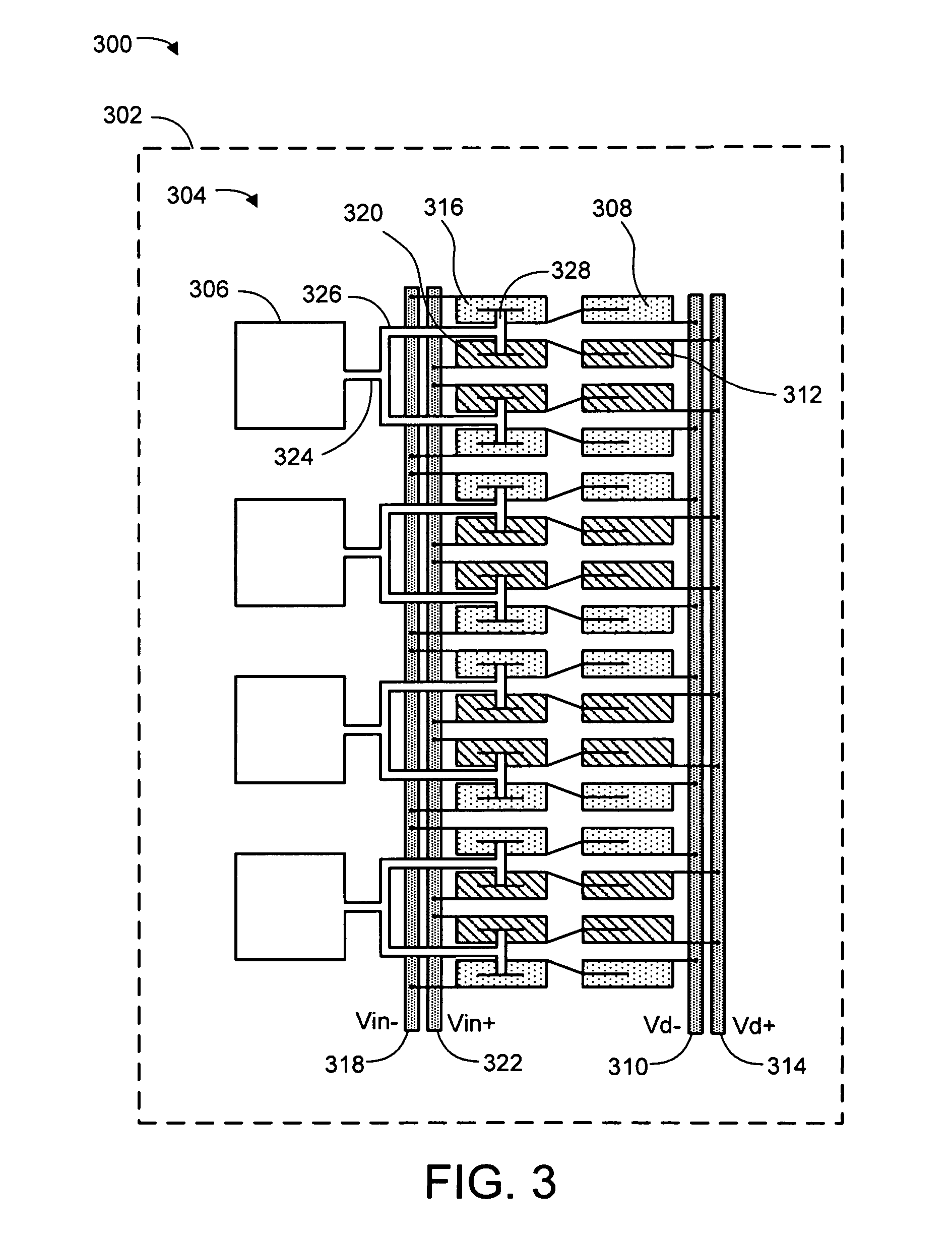Transistor and routing layout for a radio frequency integrated CMOS power amplifier device
a technology of transistor, which is applied in the direction of amplifier combinations, amplifiers with min 3 electrodes or 2 pn junctions, semiconductor/solid-state device details, etc., can solve the problems of adversely affecting the performance and gain of the more expensive implementation of off-chip gaas technology than the integrated cmos power amplifier technology, and the inability to achieve the effect of reducing the cost of implementing off-chip ga
- Summary
- Abstract
- Description
- Claims
- Application Information
AI Technical Summary
Benefits of technology
Problems solved by technology
Method used
Image
Examples
Embodiment Construction
[0014]FIG. 2 depicts a schematic circuit diagram of one embodiment of a simplified representation of a radio frequency integrated CMOS power amplifier 200. Although certain component parts are shown in conjunction with the radio frequency differential power amplifier 200 of FIG. 2, other embodiments may include fewer or more component parts, or equivalent parts, to perform fewer or more power amplifier functions. Additionally, while the components of the radio frequency differential power amplifier 200 are shown in FIG. 2 as being separate components, these components may be integrated on a single integrated chip. Additionally, some of the components shown may be representative of inherent circuit characteristics rather than discrete devices.
[0015]The radio frequency differential power amplifier 200 includes a p-block common-source transistor 202, an n-block common-source transistor 204, a p-block common-gate transistor 206, and an n-block common-gate transistor 208. The p-block com...
PUM
 Login to View More
Login to View More Abstract
Description
Claims
Application Information
 Login to View More
Login to View More - R&D
- Intellectual Property
- Life Sciences
- Materials
- Tech Scout
- Unparalleled Data Quality
- Higher Quality Content
- 60% Fewer Hallucinations
Browse by: Latest US Patents, China's latest patents, Technical Efficacy Thesaurus, Application Domain, Technology Topic, Popular Technical Reports.
© 2025 PatSnap. All rights reserved.Legal|Privacy policy|Modern Slavery Act Transparency Statement|Sitemap|About US| Contact US: help@patsnap.com



